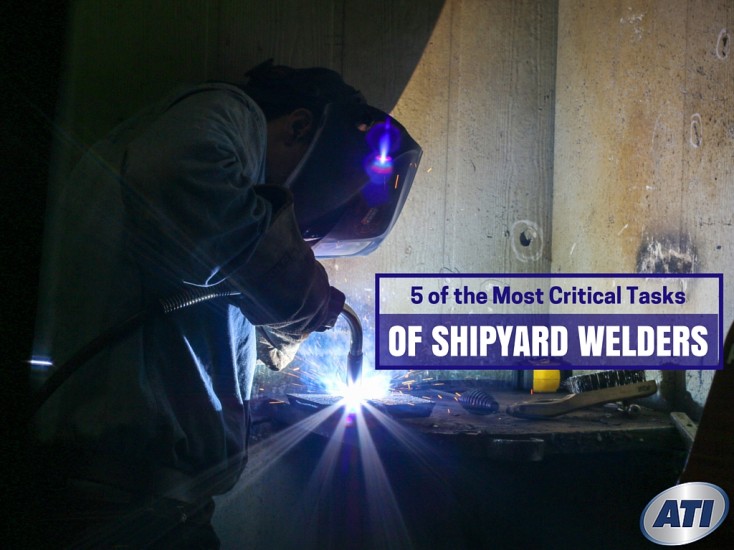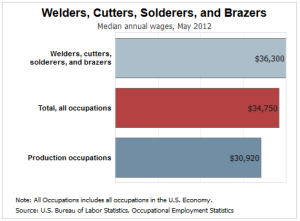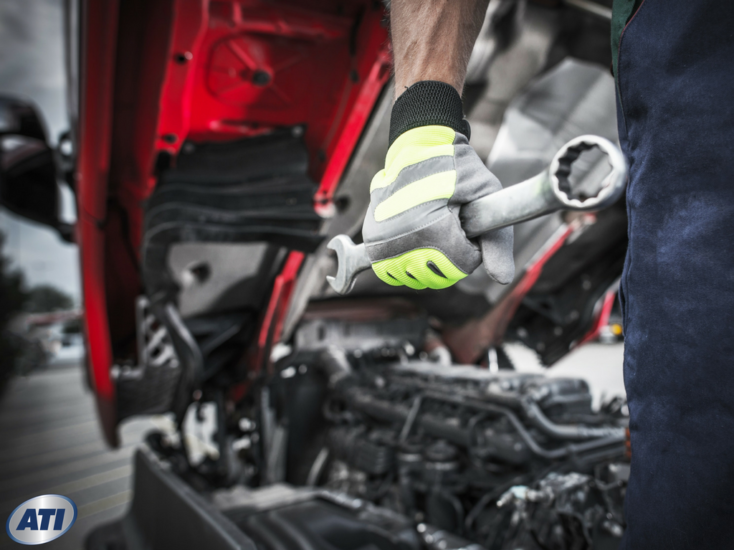5 of the Most Critical Tasks of Shipyard Welders

Welding is an essential part of shipbuilding and repair. The most critical tasks for shipyard welders obviously include things like being able to properly join two pieces of metal in a permanent fashion, but there are several other critical tasks facing them, too. It’s important that maritime welders be properly trained in a variety of areas, including safety measures, environmental awareness, and even cleanliness of work areas. While these tasks may sound simple, maritime welding is an exciting, challenging field that requires critical thinking skills and physical endurance, as well as robust training.
Critical Task #1 – Getting the Right Training
Before you can begin undertaking the other critical tasks that face shipyard welders, you must first learn the trade. For many years, it was common for shipyard employers to hire entry-level employees who lacked formal training. These unskilled workers were then trained in the use of shipyard welding equipment and were able to go from unskilled labor to skilled tradesmen without any formal training. Now, though, the landscape has changed drastically. Today, the best way to become a skilled shipyard welder is through a comprehensive maritime welding training program, but not just any program will do. You need a comprehensive program that offers:
- Classroom training and hands-on laboratory operation of the latest in welding equipment and maritime welding tools.
- Experience with realistic welding tasks in an appropriate setting, with required demonstration of various skills.
- In-depth training for safety protocols used in shipyards and other welding facilities.
Programs with these offerings could properly prepare you to step into an entry-level position in structural or pipe welding.
Critical Task #2 – Being Aware of Your Welding Environment
Shipyard welding can be very dangerous, and it would fall to you, as the welder, to ensure your surrounding environment is as safe as possible before you begin your task. You would be expected to know where your firefighting tools are, and ensure they are easy to access and sufficient to handle any fire that might occur while you’re welding. It would also be your responsibility to make sure there were no flammable or combustible materials nearby, and to inspect whatever you’re working on to make sure it doesn’t have any flammable liquids or materials inside. Inspecting tools, hoses, torches, gauges and other equipment, as well as making sure everything functions properly, is also part of being aware of your welding environment.
Critical Task #3 – Ensuring the Safety of Yourself & Others
During the course of working as a shipyard welder, you could find yourself welding in unusual places. For example, it’s common for shipyard welders to have to use platforms and scaffolding to reach their target location. If you were to find yourself in that position, it would be your responsibility to ensure the scaffolding is safe and that there are sufficient railings installed. You’d also be responsible for maintaining and using proper safety equipment like harnesses or lanyards to secure yourself in high or hazardous areas. Shipyard welders must also protect themselves against sun exposure and make sure they’re working in properly ventilated areas, especially if there’s any chance of toxins being released during the welding process.
Critical Task #4 – Keeping Your Work Area Tidy (& Safe)
Having a clean work area is essential for welding safety. During the course of your welding tasks, you may notice that debris collects in your work area, or that materials end up laid on the nearest surface, rather than returned to their proper places. This disarray can result in an unsafe situation, especially if others come into your area or work nearby and don’t properly protect themselves. Good housekeeping can help protect you and those around you, and make your job much easier over the long-term. Getting into the habit of securing your hot equipment, properly disposing of debris, and removing the electrodes from your welder when you’re walking away from your area is the best way to ensure your work area stays tidy and safe.
Critical Task #5 – Embarking on the Journey
 Okay, this one isn’t a critical task for shipyard welders, but it is critical for you, if you want to get on the path to a better future!
Okay, this one isn’t a critical task for shipyard welders, but it is critical for you, if you want to get on the path to a better future!
According to the Bureau of Labor Statistics, general welders earned $36,300 in 2012, and welding jobs are expected to grow 6% by 2022. Skilled welders will have a very good job outlook due to the need for improved infrastructure in the US.
Congratulations to the Class of 2015! I’ve met some great people at this school and I regret not being able to make it…
Posted by Steve Hamilton on Saturday, August 22, 2015
Are You Ready to Become a Shipyard Welder?
In just 19 months, you could be ready to start your maritime welding career. Get in touch with Advanced Technology Institute to get the information you need to get started on the Maritime Welding AOS degree program TODAY. Contact us at 800-468-1093 or request information online today.

DISCLAIMER – Advanced Technology Institute (ATI) makes no claim, warranty or guarantee as to actual employability or earning potential to current, past or future students or graduates of any educational program offered. The Advanced Technology Institute website is published for informational purposes only. Every effort is made to ensure the accuracy of information contained on the AUTO.edu domain; however, no warranty of accuracy is made. No contractual rights, either expressed or implied, are created by its content.
Gainful Employment Information – Maritime Welding AOS Degree
Gainful Employment Information – Maritime Welding (Diploma)
For more information about Advanced Technology Institute or any of our programs click here: http://www.auto.edu/ or http://ow.ly/VoydP.
Industry Knowledge
Welcome to the Advanced Technology Institute's Blog, your resource for industry insights and discussions on technologies shaping the future of automotive, heavy vehicle, hvac, welding, and other related career paths.
Explore how ATI's curriculum and hands-on learning opportunities can propel your career in the tech-driven world.





